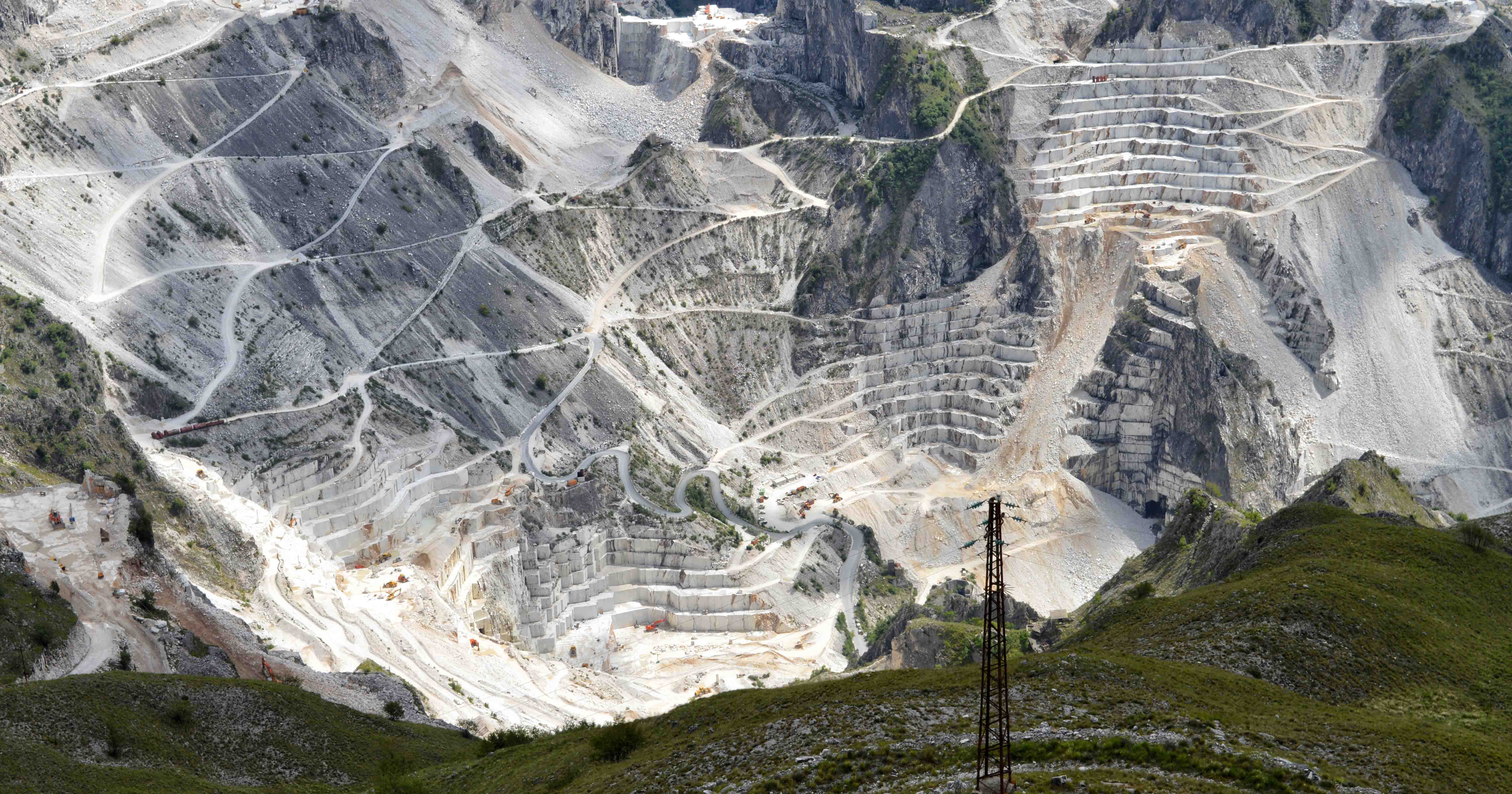The Carrara marble: tour in the quarries

- On 19 April 2019
- In Tips for travellers
- Tags: #Carrara marble tour, #Tuscany day tours
A tour in the Carrara marble quarries
Carrara is famous all over the world for its pure white marble with no veining. It does not matter to be an expert: just look up at the mountains to see the naked Apuan Alps, made of marble, from which – for centuries now – have originated statues, monuments and palaces.
Michelangelo himself used to go to the Altissimo to pick up the marble to be sculpted. And it was from there that the David was born, which today is located in Florence and the Pietà, preserved in San Pietro in Rome. In addition to Michelangelo, Donatello, Bernini and Canova were also fascinated by the Carrara marble.
Carrara marble: the history
Even the Romans, whose quarries are still visible, used it widely transporting it by sea starting from the port of Luni and therefore called it Pietra di Luni.
In the medieval period it was above all the Comacine masters who spread its use in central-northern Italy, above all in the construction of cathedrals. During the Renaissance Michelangelo came to personally choose the blocks for the realization of his sculptures in the quarry.
Carrara marble: the stone
Carrara White Marble is characterized by a homogeneous ground paste with brilliant granules with a color ranging from white to greyish with shaded gray veins that cross it in a discontinuous way. On the basis of the color of the pasta base, the various qualities of the material differ: basically White Carrara Marble C (with a lighter base) and White Carrara Marble CD (with a darker bottom). This material lightens with the passage of time, losing the water that has accumulated in it through capillarity.
Carrara marble: the colour
The variation of the background color and the veins has given rise to other types of white marble in the Carrara area, all materials of spectacular quality. When the background is light, the Carrara marble is practically white, with gray or almost absent veins we speak of Statuary, the marble of Michelangelo and Canova, to say, which represents 5% of what is extracted. If the background tends to ivory and the veins go from gray to yellow, to tend almost to green, arranging itself also in evident bands, here we are in the presence of the Calacatta.
Carrara marble in the kitchen
Carrara White is also used successfully to preserve food. From the marble in fact the hollows are obtained, which are rubbed with garlic, they are used to store the layers of pork lard and the salt with various aromas (pepper, cinnamon, cloves, coriander, sage, rosemary), which become the famous lard of Colonnata. The Carrara mortars are also mortars where to crush basil garlic and pine nuts for the Genoese pesto.
Therefore the fame of the White Carrara Marble shows no signs of diminishing and the best proof of its qualities is to be found in more than two thousand years of architecture and sculptures, whose beauty and elegance are enhanced by the use of the White Carrara Marble.
Come to our website, we can taylormade your tour to Carrara marble 4×4
